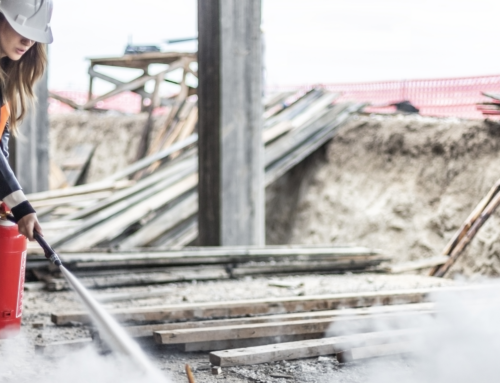Staying warm during a Canadian winter can be tough. Climate change could make winter storms bigger and stronger than ever before, since warmer air holds more moisture. That’s why if you’re a contractor or someone who works outside, you need to take extra care when working in the extreme cold. And it can get even trickier if you have to wear personal protective equipment (PPE).
Below are some key tips for helping ensure you and your employees remain safe while working outside in the winter.
Keeping warm while working outside:
- Dress accordingly and stay dry. From your ears to your toes, make sure you’re wearing things that allow you to do your job and stay dry.
- Headwear and eye protection: Get a winter hard hat liner or cap to keep your head and ears warm. If you wear safety glasses, get a pair that will protect your eyes from UV rays and help you see better when there’s snowfall.. Snow tends to reflect light, which can be dangerous if it hinders your vision while you’re working on something.
- Clothing: Tighter clothing may reduce your circulation and restrict your movement, so dress in loose layers of clothing and moisture wicking fabric. Moisture wicking fabric will keep sweat from freezing and keep you dry. Water resistant jackets and coveralls will also help you stay dry and act as a barrier from harsh winds and precipitation.
- Gloves, footwear, and socks: Protective apparel like gloves and insulated waterproof boots will keep your extremities from getting frostbite.
- Take breaks from being outside. There may be days where you’re required to be outside all day, so it’s important to make sure that when you do have a break, you get out of the cold. Take a few minutes in your work vehicle to warm up, or better yet, go out and get something warm to eat or drink.
- Keep moving – But try not to sweat. It’s easy to get cold if you’re standing around but be careful not to build up a sweat! Sweat can freeze, and if you’re wearing fabrics that absorb liquid, that can lower your body temperature fast.
Things to consider before you start your workday:
- The weather: Check out the weather forecast and set up weather alerts on your phone for the areas you’ll be working in. That way, you won’t miss extreme cold warnings.
- Where you’ll be working: If you know you’re going to be working on a roof and there was freezing rain overnight, you’ll likely want to reschedule or take extra precautions if you’re going to proceed with the work required.
- Appropriate footwear: The right footwear doesn’t just keep your feet warm. They can provide traction in snowy and icy conditions, reducing the likelihood of injury from slips and falls.
- Tools you’ll be working with: Some tools may not work properly in extreme cold weather. You may have to plan to do some of the work required inside a garage or workroom before going out to a job.
- Break times: If you know what tasks need to get done, you can plan breaks to give yourself time to rest, warm up, hydrate, and eat.
- If you’ll be working alone: It’s important to assess the work and circumstances, you’ll be working in. For example, if you’re working at heights or in a confined space, you may want another person on site in case of an emergency.
- Fuel and other fluids for your vehicle: If you’re going to be driving a far distance and using your work vehicle to take breaks and warm up, it’s a good idea to make sure you have a full tank and plenty of windshield wiper fluid.
- Winter emergency safety kit: Ideally, you’ll never need this. But if you ever find yourself stranded or in an emergency situation, you’ll be glad to have it there for you.
- How long will your day be: It’s easy to let the day get away from you, especially if you’re focused on the task at hand. It’s important to know how long your day will be so you can plan breaks and meals accordingly.
Protect your business
When the temperature drops and winter storms begin, a number of new risks can arise. That’s when having the right protection in place comes in handy. Appropriate coverage is extremely important and beneficial. To learn more about protecting yourself and your business, visit our business insurance page today.
This blog is provided for information only and is not a substitute for professional advice. We make no representations or warranties regarding the accuracy or completeness of the information and will not be responsible for any loss arising out of reliance on the information.






